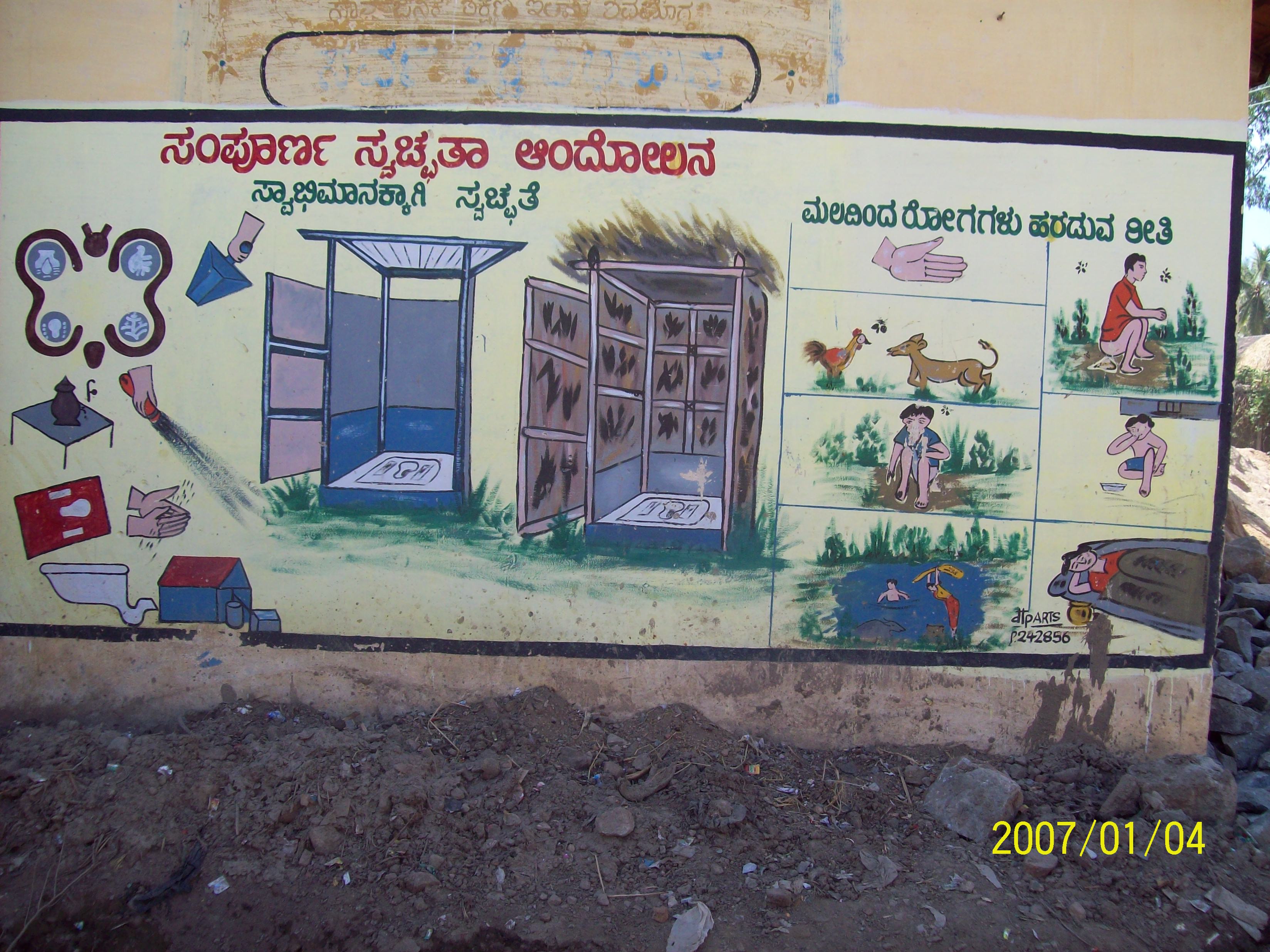Subsidy proponents believe that the poor need economic incentives while shaming proponents contend that to bring out lasting behavioural change, intrinsic motivation is required; people are more likely to use and value things they have had to pay for.
What explains the Total Sanitation Campaign: The first impact evaluation study carried out in Orissa, by a multi disciplinary team, comes up with a few answers on how to answer this key policy question !
Sumeet Patil contributes to this ongoing debate, providing insight on a study carried out to examine the effects in Orissa of a “community-led total sanitation” model implemented there. For the study, a random sample selection of villages was done and survey carried out. Data was collected through questionnaires, interviews and field visits and subsequently analyzed.

Community Participation - Total Sanitation Campaign ( Image: India Water Portal)
Some important findings from the study reveal:
- Not just health awareness but importance of privacy and dignity play a key role in influencing household demand for latrines
- Households priority for toilets is low; 80% want health dispensary’s , 59 % roads and only 7-8% give priority to water and sanitation
- Constructing individual household latrines placed conveniently next to the house for the family’s exclusive use rather than community toilets
brought in a larger change - Social pressure and peer monitoring are stronger tools than targeting individuals for success of sanitation program
- Poor need to spend 85% of their monthly income on a full-price latrine, hence subsidies clearly helped
- Equally important is how and when the subsidies are given
- Among households above the poverty line, subsidies are not necessary to spur action and shame alone can be very effective

Cartoons explaining importance of hygienic toilet habits: TSC (Image: India Water Portal)
Conclusion
Success of the campaign lies in a unique combination of shame and subsidies. The inference drawn is that the “shame and subsidy” strategy together have a larger effect than “shame” or “subsidy” alone. It is this Community Led Total Sanitation (CLTS) based behavior change, coupled with subsidy based intervention that impacts the sanitation campaign.
Download the seminar presentation by Sumeet Patil.
/articles/subsidy-or-shame-which-technique-works-better-improving-sanitation-india-talk-sumeet-patil